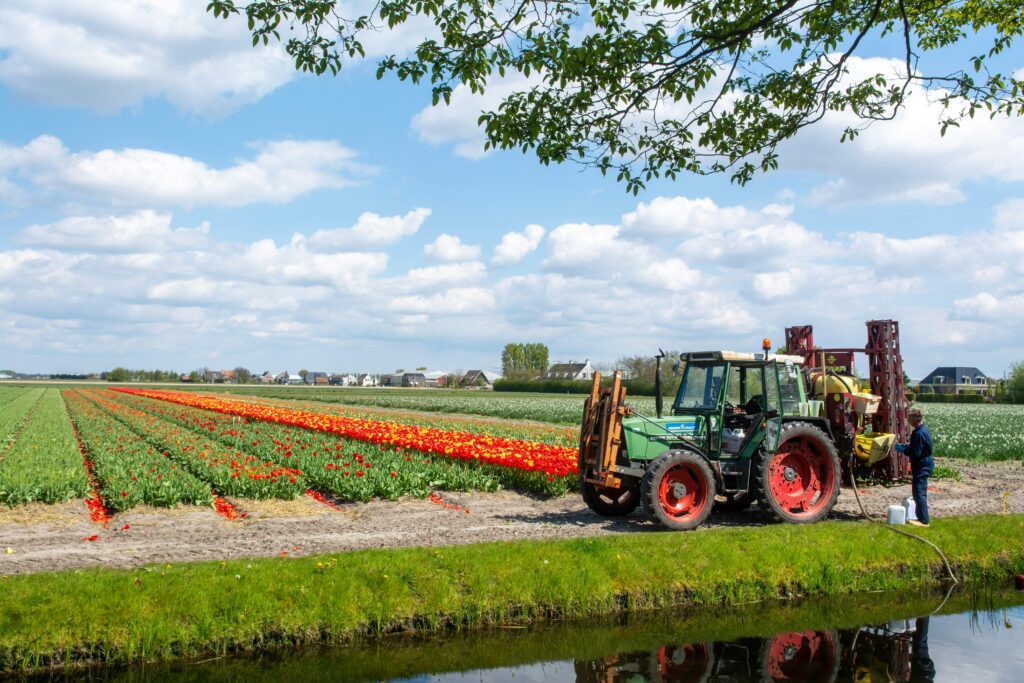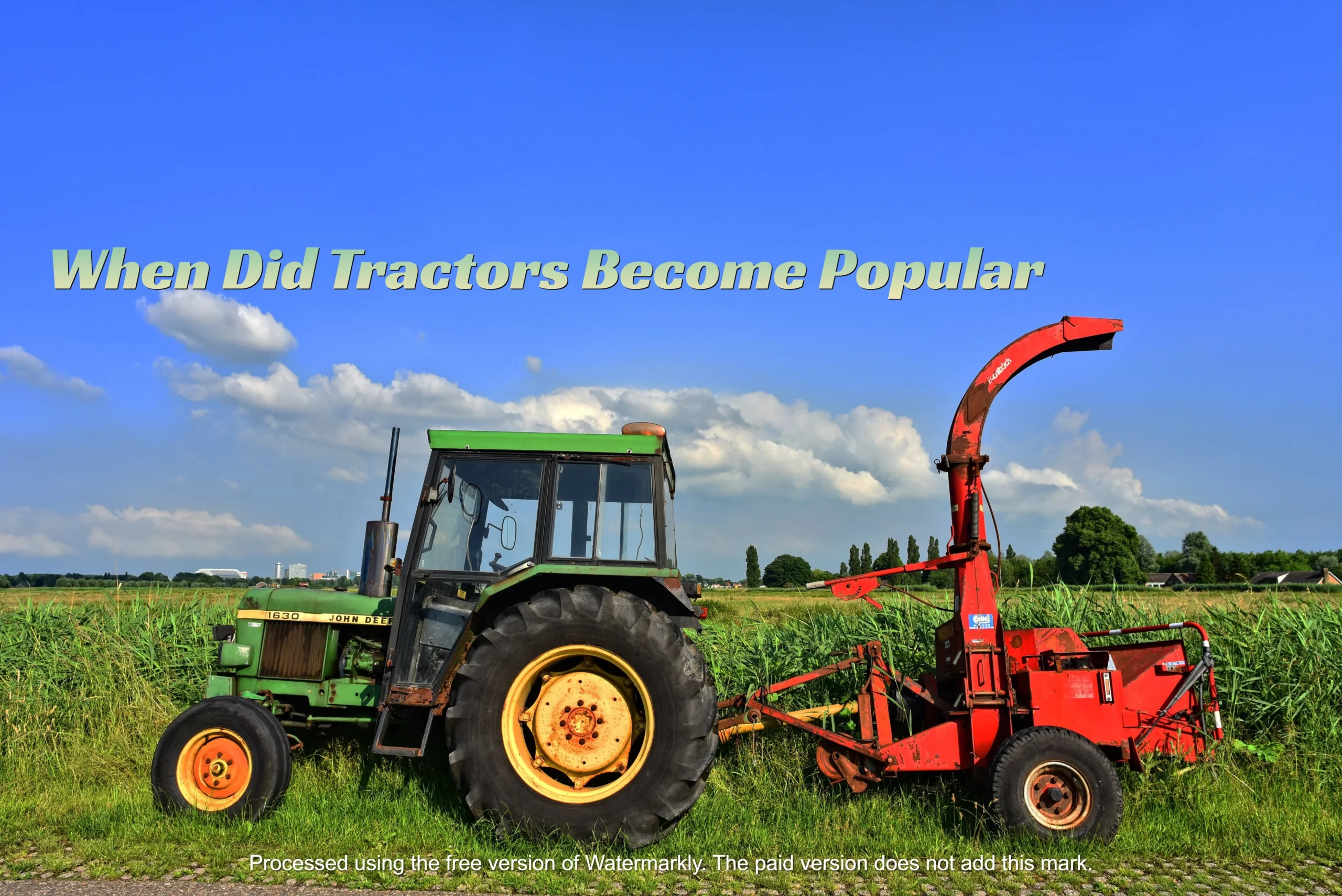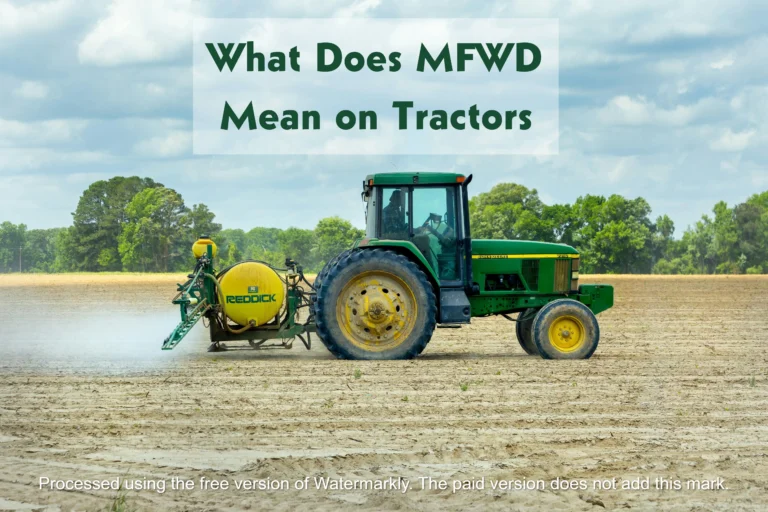When Did Tractors Become Popular
Tractors began to gain popularity in the late 19th and early 20th centuries, particularly after the introduction of the first commercially successful gasoline-powered tractor in the early 1900s. This innovation revolutionized agriculture by replacing animal power and steam engines, leading to increased efficiency and productivity on farms around the world.
Introduction
Tractors have revolutionized agriculture and played a pivotal role in shaping modern farming practices. These powerful machines have replaced the backbreaking labor of human and animal power, allowing farmers to cultivate vast areas of land with greater efficiency and productivity. However, the journey of tractors from their inception to widespread popularity has been a fascinating tale of innovation, perseverance, and adaptation to the ever-changing needs of the agricultural industry.
The Early Beginnings of Tractors Become Popular
The Dawn of Mechanized Agriculture
The concept of mechanized agriculture can be traced back to the late 18th century, when the Industrial Revolution ushered in a wave of technological advancements. Inventors and engineers began exploring ways to harness the power of steam engines for agricultural purposes, paving the way for the development of the first tractors.
The First Steam-Powered Traction Engines
In 1801, Richard Trevithick, a British engineer, built the first semi-successful steam-powered traction engine. Although bulky and impractical for agricultural use, it laid the groundwork for future innovations. Over the following decades, various improvements were made to steam-powered traction engines, making them more maneuverable and suitable for farm work.
The Introduction of Gasoline-Powered Tractors
While steam-powered traction engines had their limitations, the advent of gasoline-powered internal combustion engines ushered in a new era of tractor development.
The Pioneering Work of John Froelich
In 1892, John Froelich, an American inventor from Iowa, created what is widely regarded as the first gasoline-powered tractor. His creation, the Froelich Tractor, featured a horizontally-mounted, single-cylinder gasoline engine and was designed for threshing and hauling operations.
Early Gasoline-Powered Tractor Manufacturers
Inspired by Froelich’s pioneering work, several companies began exploring the potential of gasoline-powered tractors. Notable early manufacturers included:
- Hart-Parr Company (founded in 1897)
- International Harvester (entered the tractor market in 1906)
- Ford Motor Company (introduced the Fordson tractor in 1917)
These early gasoline-powered tractors were primarily used for plowing, hauling, and belt work, but their adoption was initially slow due to their high cost and skepticism from farmers accustomed to traditional methods.
The Rise of Tractor Popularity
Factors Driving Tractor Adoption
Several key factors contributed to the increasing popularity of tractors in the early 20th century:
- World War I Demand: The need for increased agricultural production during World War I led to a surge in demand for tractors, as they offered a more efficient means of cultivation.
- Affordable Prices: As manufacturing techniques improved, the cost of tractors became more affordable for average farmers, making them a viable investment.
- Improved Design and Functionality: Advancements in tractor design, such as the introduction of pneumatic tires, improved ergonomics, and increased horsepower, made tractors more versatile and user-friendly.
- Government Support: Various government initiatives, such as the establishment of the Cooperative Extension Service in the United States, promoted the adoption of modern farming techniques, including the use of tractors.
The Fordson Tractor: A Game-Changer
One of the most significant catalysts for tractor popularity was the introduction of the Fordson tractor by the Ford Motor Company in 1917. This lightweight and affordable tractor was mass-produced, making it accessible to a wider range of farmers. The Fordson’s success demonstrated the potential of tractors to revolutionize agriculture and paved the way for further advancements in tractor technology.
Fordson Tractor Specifications and Impact
SpecificationValueEngine4-cylinder gasoline, 20 horse power Weight Approximately 2,800 pounds Price Around $750 (in 1917)Production Over 750,000 units by the mid-1920s
The Fordson tractor’s impact on agriculture was profound. Its affordability, reliability, and versatility made it a popular choice among farmers, and its success paved the way for other manufacturers to enter the tractor market, further driving innovation and competition.
Tractor Adoption in Different Regions
The pace of tractor adoption varied across different regions, influenced by factors such as economic conditions, farming practices, and cultural attitudes.
North America
North America, particularly the United States, was a frontrunner in the adoption of tractors. The vast expanse of farmland, the need for efficient cultivation methods, and the availability of capital and resources facilitated the rapid integration of tractors into agricultural practices.
Europe
In Europe, the adoption of tractors was initially slower, as many farmers were hesitant to abandon traditional farming methods. However, the devastating effects of World War I and the need for increased food production prompted a shift towards mechanized agriculture, leading to a gradual increase in tractor usage across the continent.
Asia and Other Regions
In Asia and other developing regions, the widespread adoption of tractors occurred at a later stage due to economic constraints, smaller farm sizes, and a reliance on traditional farming practices. However, as these regions underwent industrialization and modernization, the demand for tractors grew, leading to the establishment of local tractor manufacturing facilities and increased access to these machines.
Modern Tractor Innovations
Tractor technology has continued to evolve, with manufacturers constantly introducing new innovations to improve efficiency, productivity, and sustainability.
Precision Agriculture and Automation
One of the most significant advancements in modern tractor technology is the integration of precision agriculture techniques. This includes the use of GPS systems, sensors, and advanced software to optimize various farming operations, such as planting, fertilizing, and harvesting.
Benefits of Precision Agriculture
- Increased yields and resource efficiency
- Reduced environmental impact
- Improved crop monitoring and management
Autonomous and Semi-Autonomous Tractors
The development of autonomous and semi-autonomous tractors has also gained traction in recent years. These advanced machines are capable of operating with minimal or no human intervention, leveraging technologies such as machine learning, computer vision, and advanced sensors.
Advantages of Autonomous Tractors
- Increased productivity and efficiency
- Reduced labor costs
- Improved safety and consistency
Sustainable and Eco-Friendly Tractors
As concerns about environmental sustainability grow, tractor manufacturers have focused on developing eco-friendly models that reduce emissions and promote sustainable farming practices. This includes the use of alternative fuels, such as biodiesel and electric power, as well as the incorporation of energy-efficient technologies.
Examples of Sustainable Tractor Innovations
- Electric and hybrid tractors
- Precision farming techniques for reducing input waste
- Improved engine efficiency and emission control systems
Here’s some additional content to expand the article further:
The Social and Cultural Impact of Tractors
Tractors have not only transformed agricultural practices but have also left an indelible mark on rural communities and the broader cultural landscape. Their widespread adoption has influenced various aspects of society, shaping traditions, art, and even language.

Changing Rural Lifestyles
The introduction of tractors drastically altered the way of life for many farming communities. With the increased efficiency and productivity offered by these machines, the need for manual labor diminished, leading to a shift in employment patterns and demographic changes in rural areas.
The Rise of Mechanized Farming Culture
As tractors became more prevalent, a distinct culture surrounding mechanized farming emerged. This culture celebrated the ingenuity of these machines and the skills required to operate them effectively. Tractor pulls, exhibitions, and competitions became popular social events, fostering a sense of community and pride among farmers.

Tractors in Popular Culture
Tractors have also left their mark on popular culture, appearing in various forms of art, literature, and media.
Tractors in Art and Literature
Many artists and writers have drawn inspiration from tractors, capturing their rugged beauty and symbolic significance in rural life. From paintings depicting tractors in idyllic farming landscapes to literary works exploring the challenges and triumphs of modern agriculture, tractors have become a prominent motif in artistic and cultural expression.
Tractors in Film and Television
Tractors have also made their way into the world of film and television, often serving as symbols of hard work, resilience, and the enduring spirit of the American farmer. Classic movies like “Footloose” and TV shows like “Green Acres” have featured tractors in memorable scenes, cementing their place in the collective cultural consciousness.
The Language of Tractors
The widespread adoption of tractors has also influenced language and idioms, reflecting their significance in agricultural communities. Phrases like “pulling a plow” or “plowing ahead” have become metaphors for perseverance and determination, while terms like “horsepower” and “tractor beam” have found their way into everyday vernacular.

Environmental Considerations and Sustainable Tractor Practices
As concerns about environmental sustainability and climate change have grown, the agricultural industry has faced increasing pressure to adopt more eco-friendly practices. Tractor manufacturers and farmers have responded by embracing a range of sustainable solutions to reduce the environmental impact of tractor operations.
Reducing Emissions and Fuel Consumption
One of the primary environmental concerns associated with tractors is their carbon footprint and contribution to greenhouse gas emissions. To address this issue, manufacturers have focused on developing more fuel-efficient engines, incorporating advanced emission control systems, and exploring alternative fuel sources.
Alternative Fuel Options for Tractors
- Biodiesel: Derived from renewable sources such as vegetable oils or animal fats, biodiesel is a cleaner-burning alternative to traditional diesel fuel.
- Electric and hybrid tractors: While still in the early stages of development, electric and hybrid tractors offer the potential for zero or significantly reduced emissions.
- Compressed natural gas (CNG) and liquefied petroleum gas (LPG): These alternative fuels can be used in modified tractor engines, providing a cleaner-burning option compared to traditional diesel.
Precision Agriculture and Sustainable Farming Practices
Precision agriculture techniques, enabled by advanced tractor technology, have also played a crucial role in promoting sustainable farming practices. By utilizing GPS, sensors, and sophisticated software, farmers can optimize their input usage, reducing waste and minimizing the environmental impact of fertilizers, pesticides, and water consumption.
Benefits of Precision Agriculture for Sustainability
- Reduced soil erosion and compaction through precise field mapping and controlled tractor traffic patterns.
- Minimized water usage through targeted irrigation systems and soil moisture monitoring.
- Optimized application of fertilizers and pesticides, reducing runoff and water contamination.

Tractor Maintenance and Lifecycle Management
Proper maintenance and lifecycle management of tractors can also contribute to environmental sustainability. Regular servicing, following manufacturer recommendations, and implementing preventive maintenance practices can help extend the lifespan of tractors, reducing the need for frequent replacements and the associated environmental costs of manufacturing new machines.
Tractor Recycling and Repurposing
When tractors reach the end of their operational life, recycling and repurposing initiatives can play a vital role in minimizing waste and promoting a circular economy. Many tractor components, such as metals and tires, can be recycled and reused, while obsolete tractors can be repurposed for alternative uses, such as art installations or educational exhibits, further reducing their environmental footprint.
By embracing sustainable practices and exploring innovative solutions, the agricultural industry can continue to leverage the power of tractors while minimizing their environmental impact, ensuring a more sustainable future for farming and the planet.
Conclusion
The journey of tractors from their humble beginnings to their current status as indispensable workhorses in modern agriculture has been a remarkable one. From the pioneering efforts of inventors like John Froelich to the game-changing impact of the Fordson tractor, the rise of tractor popularity has been driven by a combination of technological advancements, economic factors, and the ever-increasing demand for efficient and sustainable farming practices.
Today, tractors have evolved into highly sophisticated machines, incorporating cutting-edge technologies like precision agriculture, automation, and eco-friendly designs. As the world’s population continues to grow and the need for food production intensifies, the role of tractors in meeting these challenges will become even more crucial.
Looking ahead, the future of tractor technology is poised to bring even more innovative solutions, from fully autonomous operation to the integration of advanced data analytics and artificial intelligence. These advancements will not only enhance productivity and efficiency but also contribute to more sustainable and environmentally-friendly farming practices.
As we reflect on the remarkable journey of tractors, it becomes evident that their impact extends far beyond mere agricultural productivity. They represent the triumph of human ingenuity, perseverance, and our collective quest for progress, shaping not only the landscapes of our farms but also the very fabric of our societies.
FAQs
Q1: Why did tractors become popular?
Tractors became popular due to their ability to significantly increase agricultural productivity and efficiency. As farming operations grew larger and the demand for food increased, tractors offered a mechanized solution that could replace the labor-intensive work of humans and animals. Additionally, improvements in tractor design, affordability, and government support programs drove their widespread adoption.
Q2: When did tractors start replacing horses and mules on farms?
Tractors began gradually replacing horses and mules on farms in the early 20th century, with the transition accelerating after World War I. The Fordson tractor, introduced in 1917, played a significant role in this shift due to its affordability and mass production. However, the complete replacement of draft animals took several decades, as some farmers were hesitant to abandon traditional methods.
Q3: How did World War I contribute to the popularity of tractors?
During World War I, there was an increased demand for agricultural production to support the war effort. Tractors offered a more efficient and productive means of cultivation compared to traditional methods, leading to a surge in their adoption. Additionally, the war effort disrupted the supply of labor and draft animals, further highlighting the need for mechanized solutions like tractors.
Q4: What role did government policies play in the adoption of tractors?
Government policies and initiatives played a crucial role in promoting the adoption of tractors. In the United States, for example, the establishment of the Cooperative Extension Service in the early 20th century helped educate farmers about modern agricultural techniques, including the use of tractors. Additionally, government subsidies, tax incentives, and financing programs made tractors more accessible to farmers, accelerating their widespread adoption.
Q5: How have tractors evolved in recent years?
Modern tractors have undergone significant technological advancements to improve efficiency, productivity, and sustainability. Some key innovations include:
- Precision agriculture and automation: Integrating GPS systems, sensors, and advanced software to optimize farming operations and reduce input waste.
- Autonomous and semi-autonomous capabilities: Leveraging machine learning, computer vision, and advanced sensors to enable tractors to operate with minimal or no human intervention.
- Sustainable and eco-friendly designs: Incorporating alternative fuels like biodiesel and electric power, as well as energy-efficient technologies to reduce emissions and environmental impact.
- Increased power and versatility: Offering higher horsepower engines and a wider range of attachments and implements to handle diverse farming tasks.
- Advanced ergonomics and safety features: Improving operator comfort, visibility, and safety through better cab designs, intuitive controls, and integrated safety systems.






